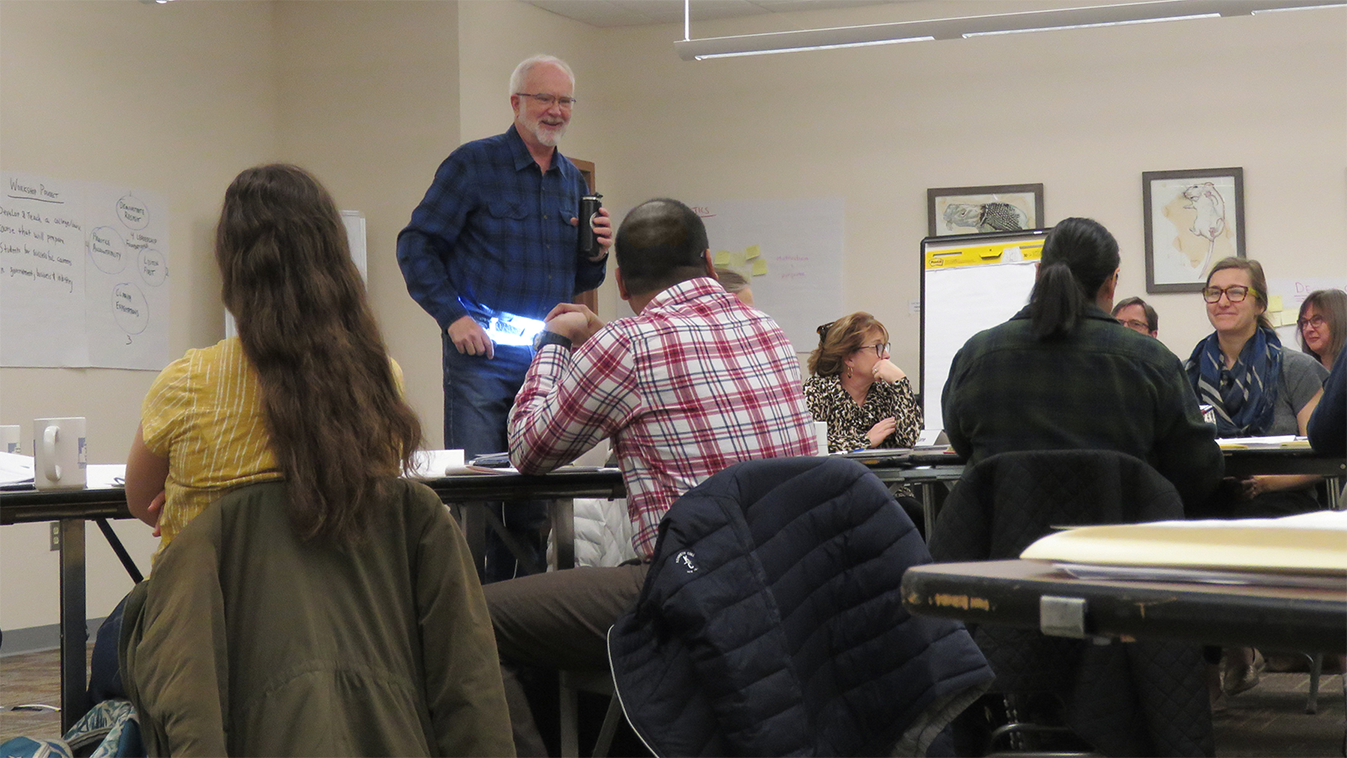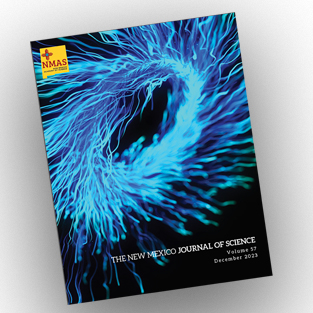NEWS
An EPSCoR Retrospective

Bill teaching at Team Science Leadership Workshop in 2020
NM EPSCoR
I will be retiring from EPSCoR and UNM on March 1st. Now is a good time to take a brief look back over the past roughly 15 years that I have served as Director of New Mexico EPSCoR and the 21 years that I have been at UNM. I joined UNM in 2000, the year that coincided with New Mexico officially becoming an EPSCoR state.
Dr. Jim Gosz led the initial NSF proposal that led to New Mexico’s EPSCoR status as well as the first two NSF EPSCoR Track 1 projects (2001-2007) which, at that time, were 3-year, $3M/year awards. I was hired as EPSCoR Director in 2007 and have since been able to oversee the successful submission, funding and implementation of the past three Track 1 projects which had expanded to 5-year, $5M/year awards (with foci on mountain stream hydrology, sustainable energy production and, currently, modernizing the electric grid), as well as initiate the planning effort for the next Track 1 proposal. This next project will focus on advanced manufacturing and will be submitted this summer and overseen by the new State EPSCoR Director—Dr. Ganesh “Gunny” Balakrishnan, who is also associated with UNM’s School of Engineering and is a top-flight researcher and administrator.
The five NSF EPSCoR Track 1 projects have been overwhelmingly successful and have brought significant and expensive research equipment to our colleges and universities, supported dozens of new faculty hires, trained hundreds of postdocs, and graduate and undergraduate students, and provided outreach to hundreds of thousands of New Mexicans via Science Fiestas, museums exhibits, Teen Science Cafes, and a plethora of informal science education and other programs. Importantly, the teams of researchers and educators that have underpinned the Track 1 projects have published hundreds of high-caliber, peer-reviewed papers, been awarded many patents, received additional funding at a rate of roughly $3 new dollars for every $1 of EPSCoR funding, and been awarded numerous national and international accolades, including multiple NSF CAREER awards.
Many individuals within and outside New Mexico, including funders, have asked “what is your recipe for success?” so I would like to conclude by leaving you with 10 lessons I have learned and that I believe have contributed to EPSCoR’s extraordinary impact on education and research in the state.
- Every Track 1 project has had a bold, compelling vision. For example, our current Track 1 project focuses on modernizing the electric grid, which is no small feat!—requiring true multi- and interdisciplinary expertise and collaboration.
- We have strived to build the best team possible. State office staff and project researchers and educators are exemplary individuals with unique skillsets, diverse backgrounds, a high degree of curiosity, and great sandbox skills (i.e., meaning they enjoy collaborating and learning to become better at it). We do everything possible to identify, engage and nurture these individuals.
- We have created SMART[1] strategic plans and followed them, using a logic modeling framework that allows for creativity but also helps resist “mission creep”.
- We have sought expert guidance along the way and been fortunate to benefit from expert external advisory boards and, most importantly, a highly engaged and diverse State EPSCoR Committee led by Co-Chair Jack Jekowski (who has served in that capacity since the beginning) along with individuals like Drs. John Montgomery (Eastern New Mexico University), Van Romero (NM Tech), and Valerie Montoya (Southwestern Indian Polytechnic Institute) who have been active on the Committee since 2007.
- We employ focused working groups roughly following the proven NCEAS[2] model whereby many different voices and perspectives can collaboratively contribute innovative, unexpected ideas, achievements and productivity.
- We maximize communication within the team via consistent, frequent and facilitated virtual and, when possible, in-person meetings in order to build trust and engage everyone to the fullest.
- We track stakeholder needs, assess our progress in meeting those needs, and adjust our activities accordingly. To do so, we employ expert external evaluators to provide formative and summative evaluation of our research and education programs, and we build and deploy testbed environments to verify that our software and engineering solutions work in the real world.
- We communicate broadly outside the team so that people throughout New Mexico are aware of EPSCoR—i.e., what we do, our impact on the state, and how people can become engaged in our numerous education and research activities. We do so via in-person events, a dynamic website, frequent newsletters and annual reports, and a wide variety of social media outlets.
- We plan for sustainability from the start. We identify, understand and communicate our value proposition to our funder(s) and stakeholders, and diversify funding as soon as possible and as much as possible. Provision of networking opportunities and support for collaborative innovation working groups have been central to our sustainability efforts.
- We have fun. The work is challenging and demanding, so we attempt to make the journey fun, interesting and rewarding. We do so by encouraging networking and relationship-building via engaging activities, field trips, and social events where we learn from one another. Importantly, we acknowledge and celebrate participant contributions and successes.
It has been an honor and pleasure meeting and working with EPSCoR’s dedicated staff and the hundreds of faculty, students and educators that have been involved in our programs. I am confident that New Mexico EPSCoR is being left in very good hands and I look forward to seeing the many exciting achievements that are yet to come.
[1] Specific, Measurable, Actionable, Realistic, Time-bound
[2] National Center for Ecological Analysis and Synthesis


